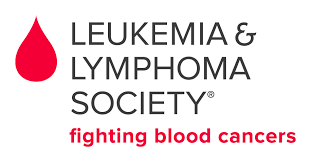AML patients need treatment soon after diagnosis because the disease is known to progress rapidly. The initial goal of treatment is to get the patient into remission.
Common treatment includes chemotherapy, stem cell transplantation and clinical trials.
A number of factors affect the choice and outcome of treatment, including:
- Your AML subtype
- The results of cytogenetic analysis
- Whether you have received chemotherapy in the past to treat another type of cancer
- Whether you have had myelodysplastic syndrome (MDS) or another blood cancer
- Whether the AML is in your central nervous system
- Whether your AML has not responded to treatment or has relapsed
- The presence of systemic infection at diagnosis
- Your age and general health
As you develop a treatment plan with your doctor, be sure to discuss what results to expect from your treatment and if participating in a clinical trial is an option for you.
You may find it helpful to bring a loved one with you to your doctor visits for support, to take notes and to ask questions. It's a good idea to prepare the questions you would like to ask before your appointment. You can also record your conversations with your doctor and listen more closely when you get home.
Chemotherapy involves the use of potent drugs or chemicals, often in combination and given in cycles to kill or damage cancer cells. Chemo takes a toll on your body because the toxicity of the drugs can also damage or kill healthy cells, causing side effects. It is important to remember that everyone experiences side effects differently.
AML treatment is generally done in two phases, induction therapy and post-remission (consolidation) therapy.
The first phase of your treatment is induction therapy. The goal is to induce remission (when no evidence of the disease is left). Induction therapy for AML attempts to kill as many AML cells as possible with chemotherapy and get healthy blood cell counts back to normal.
After induction therapy is complete and the patient is in remission, there will be another phase of treatment needed called post-remission therapy, or consolidation therapy. This second phase of treatment is used to destroy any stray AML cells not detected by blood or marrow tests. Without post-remission therapy, the AML is likely to return.
CNS prophylaxis is a post-remission treatment used to prevent central nervous system (CNS) AML. CNS AML, or meningeal leukemia, occurs when AML spreads to the covering of the spinal cord and brain, called the meninges.
Your doctor may recommend an allogeneic stem cell transplant or an autologous stem cell transplant to treat your AML. Stem cell transplantation is not an option for everyone.
Allogeneic Stem Cell TransplantationAllogeneic stem cell transplantation involves transferring stem cells from a donor to the patient. The procedure follows high-intensity chemotherapy, potent drugs that must be toxic enough to kill leukemic cells. Unfortunately, the drugs also impact normal stem cells in the bone marrow.
Allogeneic stem cell transplants are used in order to give strong doses of chemotherapy to kill AML cells, and then start a new supply of red cells, white cells and platelets with help from the transplanted donor stem cells.
The decision to do a stem cell transplant depends on the availability of a suitable donor, your response to drug therapy and your understanding of transplant benefits and risks.
Autologous stem cell transplantation involves "harvesting," or retrieving, noncancerous stem cells from the patient’s own body and freezing them. The cells are returned to the patient’s bloodstream after intensive chemotherapy is given. The procedure is only appropriate for certain patients.
To be considered for an autologous stem cell transplant, your doctor will base his or her decision on your overall health, the chance that chemotherapy alone will treat your AML, the types of abnormalities affecting the chromosomes and cells and whether a suitable donor is available to donate stem cells.
Refractory Leukemia
Many patients achieve remission after initial treatment for AML. However, some patients have residual leukemic cells in their marrow even after intensive treatment. This is referred to as refractory leukemia.
For refractory AML, treatment options may include drugs not already used during the first course of treatment. Stem cell transplantation may be used when remission is achieved and may result in a more durable remission.
Relapsed Leukemia
Some patients achieve remission for a period of time, but then have leukemia cells recur in the marrow, causing a decrease in normal blood cells, known as relapsed leukemia.
In patients who relapse, the duration of the remission, the patient’s age and the cytogenetic findings in the leukemia cells influence the approach to therapy. Drugs similar to those administered initially, different drugs or stem cell transplantation may be used to treat the leukemia.
Stem Cell Transplantation in Relapsed Patients
Allogeneic stem cell transplantation may be a treatment option for patients in early first relapse or second remission, although this is a high-risk procedure. For patients who lack a sibling donor, a transplant using a matched unrelated donor can be effective. It is possible that patients with AML who relapse after initial allogeneic stem cell transplantation may have a long-term remission if they have a second transplant.
To learn more, visit The Leukemia and Lymphoma Society.
 Content provided by:
Content provided by: